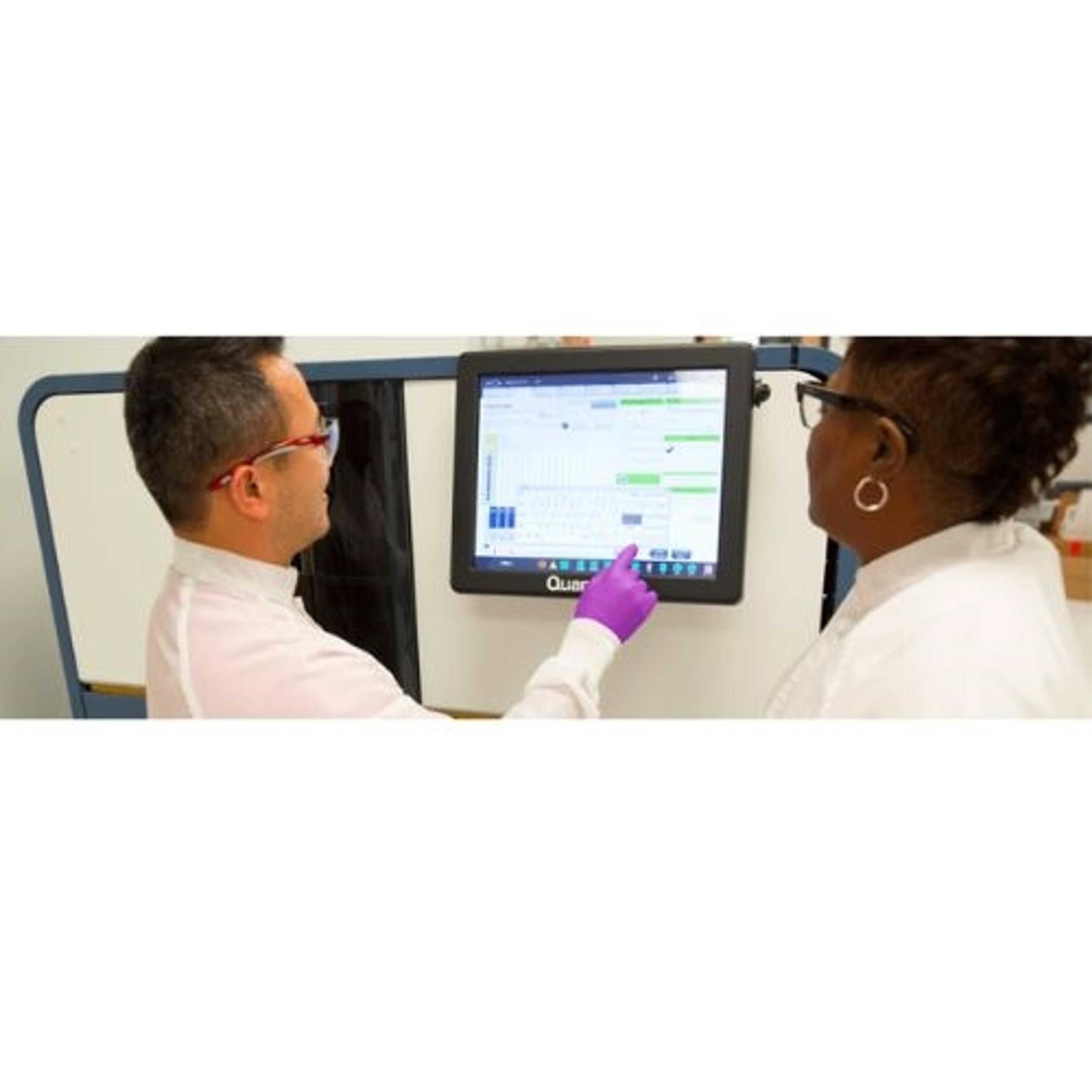Dried blood spot testing is revolutionizing Alzheimer’s monitoring
Discover how advances in dried blood spot testing are advancing biomarker analysis and sample collection
1 Aug 2025

Dr. Hanna Huber, nutrition scientist and postdoctoral researcher at the Neurochemistry Laboratory at the University of Gothenburg, and Dr. Mingwei Zhao, Senior Director, Accelerator Services, Quanterix
Blood based biomarkers are becoming central to Alzheimer’s disease diagnostics. There is therefore a growing need for minimally invasive, field deployable blood testing tools to enable rapid analysis of patient samples no matter where the patients are located. Discover how Dr. Hanna Huber, postdoctoral researcher, University of Gothenburg, Sweden, and Mingwei Zhao, Ph.D., Senior Director, Accelerator Services, Quanterix are driving innovation in this field by redefining accessibility and precision in neurodegenerative research.
Blood based biomarkers are typically detected using traditional venous blood tests, a laborious process reliant on the availability of technical materials and trained phlebotomists. However, dried blood spot (DBS) testing simplifies this blood collection process, using a quick finger prick to collect samples of blood on a filter card, eliminating the need for venipuncture. Once dried, the samples can be mailed to a laboratory for analysis. This is potentially a game-changing approach for regions without direct access to a laboratory, provided the right biomarkers and sustainable extraction options are developed.
The release of the new Simoa® Dry Blood Extraction Kit, developed by Quanterix in partnership with the University of Gothenburg, does just that. The technology enables scalable, decentralized, and ultra-sensitive testing for neurodegenerative diseases. This removes significant barriers faced in disease research and monitoring and enables both high-throughput labs and remote clinics alike to access critical insights from simple finger-prick samples.
“DBS could facilitate frequent sampling without burdening the patient too much as they can simply sample via a single finger prick at their home,” explains Huber, whose research work has been instrumental in the development of this kit. “DBS testing reduces logistical challenges associated with traditional phlebotomy, including cold chain requirements. It could be used for pre-screening or triage, or for real-world data collection.”
How to simplify biomarker testing
“The Simoa Dry Blood Extraction Kit overcomes the challenges faced in traditional blood testing by offering a harmonized, semi-automated solution that preserves femtogram-level sensitivity and works across DBS devices,” adds Zhao. “It enables researchers to generate reliable, high-resolution biomarker data from a single DBS sample, bringing us closer to truly decentralized and scalable testing.”
By enabling samples to be collected anywhere, without the need for specialized staff or cold-chain storage, this kit will enable improved early detection rates and subsequently lower cost of care. “This could promote early detection and personalized disease tracking of neurodegenerative diseases in the future,” Huber indicates. “Even highly affected patients could simply sample at home.”
One Alzheimer’s biomarker in particular, phosphorylated tau 217 (p-Tau217), is particularly promising for its ability to be detected in a DBS sample. “p-Tau217 is the most exciting biomarker in DBS,” says Huber. “We are able to detect p-Tau217 in dried blood spots, and there have been lots of studies recently published showing that p-Tau217 is central to Alzheimer’s pathology. We already have very good assays for this biomarker, and it is making early detection a reality.”
What’s inside the kit?
“A key gap in Alzheimer’s diagnostics has been the lack of standardized, high-performance extraction methods that maintain analytical sensitivity and device compatibility,” Zhao explains. “This new kit preserves the ultra-sensitive performance of Simoa assays, ensuring we can still detect low-abundance biomarkers like p-Tau, neurofilament light chain (NfL), and glial fibrillary acidic protein (GFAP) from a single DBS sample.”
The kit is designed to be a flexible tool and is compatible with leading DBS collection systems including Capitainer and Telimmune devices. It is also not limited to Alzheimer’s disease. “It’s a platform, not a single-use solution”, notes Zhao.
Quanterix’s in-house service division, The Accelerator Lab, will offer testing services for DBS samples. “With the release of the Simoa Dry Blood Extraction Kit, the Accelerator team will begin offering DBS-based biomarker testing services,” says Zhao. “This expansion strengthens our service capabilities to support both research and clinical studies. Our goal is to empower researchers with flexible sampling solutions that maintain the analytical rigor of Simoa assays while supporting diverse study designs.”
A new era in biomarker research
With the move towards routine DBS testing in Alzheimer's diagnosis and monitoring, Huber and Zhao are agreed on what is needed next, stressing that whilst DBS is incredibly promising, it will take further collaboration across academic, commercial, and clinical communities to ensure mainstream adoption is a possibility.
“To make DBS-based neurodegeneration biomarker analysis reliable in both research and clinical settings, several key elements are needed,” says Zhao. “We need standardized sample collection and extraction protocols to ensure consistency across sites and time points. We also need rigorous analytical validation and clinical correlation studies — especially as this moves toward regulatory and diagnostic use.”
Huber agrees, “The results we have at the moment are still pilot data. We really need to go into larger-scale validation studies. Harmonized protocols are essential — and we need to establish reference ranges for protein levels isolated from DBS.”
It is clear that DBS testing has the potential to transform how we monitor, detect, and understand disease. With new tools like the Simoa Dry Blood Extraction Kit, scalable, sensitive, and decentralized biomarker analysis is within reach. Both Huber and Zhao are excited about the possibilities.
“What excites me most is that DBS is minimally invasive and low-burden for patients,” says Huber. “For people who are under-observed or face barriers to care, this could open up a very easy and cost-effective way to get tested.”
“This is about accessibility,” adds Zhao. “We’re building tools that work outside the clinic, tools that let you study biomarkers with rigor, anywhere in the world.”


